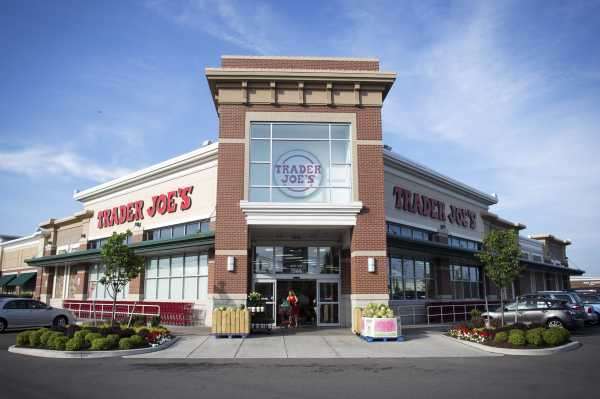
This story is part of a group of stories called

Uncovering and explaining how our digital world is changing — and changing us.
A Trader Joe’s in downtown Minneapolis became the second unionized location in the US on Friday, less than a month after a Massachusetts location became the first. One in Boulder, Colorado, could be next, bringing the effort to unionize the grocery chain across the country. There will likely be many more in between.
This could be the start of a mass union effort at Trader Joe’s in which victory leads to victory, and unions become a reality for America’s retail and hospitality workers, who are among the lowest paid.
In other words, Trader Joe’s could be the next Starbucks.
After a Starbucks in Buffalo, New York, became the first company-owned location to unionize last December, more than 215 other stores around the country have done the same. That initial win set off a chain reaction of Starbucks workers working together to share notes on how more locations could organize. Workers explained the unionization process, shared tips with their colleagues, and told would-be union members what anti-union tactics to expect from the company. The strategy seems to be paying off, as more Starbucks employees join union ranks every week.
“That’s our vision. That’s what we want,” Sarah Beth Ryther, a worker at the Minneapolis Trader Joe’s, told Recode last week ahead of the union vote. “We really and truly are interested in creating a larger movement because we are all going through the same things.”
Trader Joe’s, a California-headquartered grocery chain known for outfitting employees in Hawaiian shirts and offering higher-end goods at lower-end prices, has more than 500 locations in more than 40 US states. Workers at the two newly unionized locations say they’ve heard from peers interested in unionizing in every state where there’s a Trader Joe’s.
There’s a reason, workers say, that more than 50 years after Trader Joe’s was founded, three separate stores all got the idea to unionize pretty much at once. The company’s retail employees nationwide are facing the same issues regarding worker safety, pay that’s no longer competitive, and benefits that aren’t as good as they used to be.
“Trader Joe’s earned the reputation they have for being a good place to work by taking care of us and listening to us,” said Woody Hoagland, who’s been at Trader Joe’s for 14 years and whose store in Massachusetts was the first to unionize. “Then it started to slowly get chipped away and it really took a pretty precipitous fall during the pandemic.”
Hoagland explained that making $24 an hour, which is near the maximum he can get at a Trader Joe’s store in his area, still makes it very difficult to pay rent on an apartment for himself and his two kids. As the cost of goods has risen much faster than wages, he says, Trader Joe’s is no longer offering a living wage. Meanwhile, in recent years the company has minimized its retirement benefits and raised requirements to receive health care, while their jobs have become more dangerous thanks to the pandemic.
The other big reason Trader Joe’s is unionizing now, of course, is the organizing activity at Starbucks. The recent spate of successful unionizations at the coffee giant showed workers at Trader Joe’s that it was possible for them too. And there are a lot of similarities between the two companies.
As people have historically done at Starbucks, many came to work for Trader Joe’s because of the reputation it had for being a good place to work. Like Starbucks workers, Trader Joe’s employees became inadvertent front-line workers, who forged tight bonds with coworkers over their shared experiences working in person during the pandemic. Trader Joe’s and Starbucks organizers both say they’re trying to hold their companies to the higher standard the companies themselves have set, lest they become just as bad as other retailers. Even their demands are similar: better pay, better benefits, more safety precautions, and a bigger say in how the store is run.
Trader Joe’s did not respond to a request for comment.
Workers at Trader Joe’s and Starbucks also say they need unions to claw back worker protections that eroded as the highly unionized manufacturing economy gave way to the low-paying service industry. The pandemic brought an already bad situation to a boiling point and spurred workers to fight back. A tight job market means workers have more leverage now than they have had in recent history. And pro-union sentiment makes now as good a time as any to change things.
Some 70 percent of non-union workers said they’d join a union at their primary workplace in a new survey by career services site Jobcase. Of these skilled and hourly workers, 41 percent said they’re more likely to do so now than they would have been three years ago. A Gallup poll last year found the highest approval rate for unions in nearly 60 years. And union filing petitions were up 57 percent in the first half of fiscal year 2022 compared with 2021, according to the National Labor Relations Board.
It’s a long journey, though, from filing for a union to actually getting one. First, a majority of workers at a particular store need to vote in favor of a union, which itself isn’t an easy task since the company can use workers’ time on the job to convince them otherwise. And if the workers organizing do win the vote, the union and company then have to negotiate a contract, which both have to agree to — a process that can be lengthy if it happens at all.
And while Trader Joe’s bears many similarities to Starbucks — both progressive companies that have resorted to union-busting tactics, their employees say — there are differences, too. Trader Joe’s stores are typically much larger than Starbucks. The unionized Trader Joe’s locations, for instance, have about 80 employees, while a typical Starbucks has around 25. Union organizers say it’s much easier to organize small groups because it’s more intimate and easy to connect one-on-one.
The first two Trader Joe’s unions have organized under an independent union, Trader Joe’s United, similar to how Amazon workers in Staten Island founded their own union. That independent status helps avoid criticism that these union movements are being forced from the outside. (The Trader Joe’s location in Boulder has joined forces with a much larger existing union, the United Food and Commercial Workers). Meanwhile, Starbucks stores are unionizing under the umbrella of Workers United, an affiliate of the Service Employees International Union. Still, these Starbucks employees say their union is very much worker-led, even if it leans on another union for help.
The differences, however, aren’t stopping Trader Joe’s and Starbucks workers from trying to support each other’s efforts. Unionized workers at a nearby Starbucks showed up to support Minneapolis Trader Joe’s workers at their rally last week, and Trader Joe’s United has been broadly supportive of Starbucks’ organizing efforts.
“They showed up for us, and we’ll show up for them,” Ryther said.
More importantly, Trader Joe’s workers around the country are reaching out to one another, offering advice, exchanging tips, and hoping their union effort catches on as fast as Starbucks’.
These Trader Joe’s victories are one of several high-profile union wins this year at places people don’t normally expect unions. Stores as far afield as Apple stores or outdoor apparel retailer REI are taking advantage of a unique point in time to eke out better conditions for American workers.
Of course, their leverage might only last as long as hiring remains difficult and the economy is good. But for now, it’s looking strong.
Will you support Vox’s explanatory journalism?
Millions turn to Vox to understand what’s happening in the news. Our mission has never been more vital than it is in this moment: to empower through understanding. Financial contributions from our readers are a critical part of supporting our resource-intensive work and help us keep our journalism free for all. Please consider making a contribution to Vox today.
Sourse: vox.com






